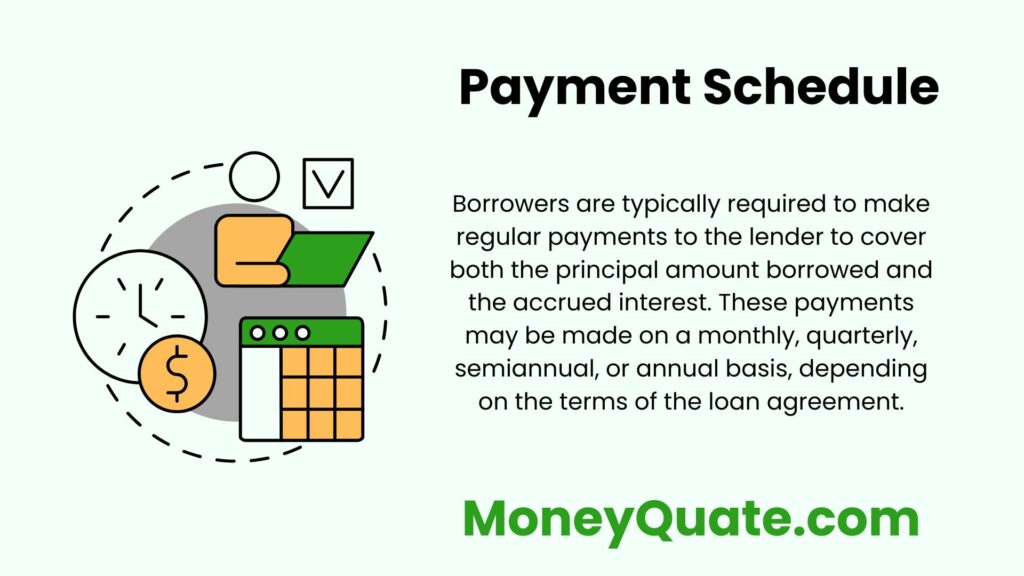A payment schedule outlines the timing and amounts of payments to be made over a specified period. It is commonly used for loans, mortgages, leases, and other financial agreements where payments are made in installments. Here’s a detailed look:

Contents
Introduction
A payment schedule is a structured plan that delineates when payments are due and the corresponding amounts.
It provides clarity and transparency regarding financial obligations, helping borrowers and lenders manage cash flows.
Components of a Payment Schedule
- Payment Dates: Specifies the dates on which payments are due, typically monthly, quarterly, or annually.
- Payment Amounts: Indicates the specific amounts to be paid at each installment, including principal and interest components.
- Total Payments: Summarizes the total amount to be paid over the entire term of the agreement, including interest charges.
Types of Payment Schedules
- Amortizing Payment Schedule: Common for loans and mortgages, with payments structured to gradually pay off the principal balance over time while covering interest charges.
- Balloon Payment Schedule: Features lower initial payments followed by a large final payment (balloon payment) to fully amortize the loan.
- Interest-Only Payment Schedule: Involves paying only the interest portion of the loan for a specified period, with the principal amount remaining unchanged.
Importance of Payment Schedules
- Financial Planning: Helps borrowers anticipate and budget for upcoming payments, ensuring timely repayment and avoiding default.
- Risk Management: Allows lenders to forecast cash inflows and assess credit risk associated with borrowers’ ability to meet payment obligations.
- Compliance and Transparency: Ensures compliance with contractual terms and regulatory requirements, promoting transparency and accountability in financial transactions.
Example of Payment Schedules
Consider a 30-year mortgage with a fixed interest rate. The payment schedule might include:
- Monthly payments of $1,000, consisting of $800 towards principal and $200 towards interest.
- Total payments over the term amounting to $360,000, including $120,000 in interest.
Conclusion
A payment schedule is a fundamental tool in financial management, providing a structured framework for managing and tracking payments over time. By understanding the components and implications of payment schedules, borrowers and lenders can effectively navigate financial agreements and ensure mutual adherence to contractual obligations.
1 thought on “Mastering Payment Schedule: Everything You Need to Know”